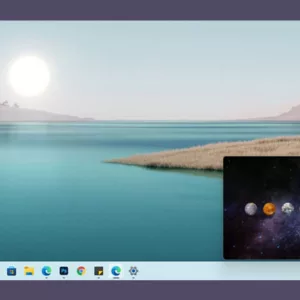Simply put, the Internet of Things (IoT) refers to the network of physical devices that allow them to share data via the Internet.6e
The main goal of the Internet of Things (IoT) is to communicate among all devices in real-time to share essential data and information in a home or business.
IoT has a major impact on how people live their daily lives today. Teams in offices are using IoT to collaborate, and individuals are at home to make their homes smarter. Wearable technology, autonomous vehicles, and smart homes are a few examples of IoT that we frequently use.
What is the Internet of Things (IoT) Software?
In this technological era, it is impossible to disconnect from the Internet even for just one second. And this constant reliance on the Internet gave birth to IoT software.
IoT software refers to the group of programs, applications, and systems that allow IoT devices to be connected, communicated, and managed.
It includes several software elements that make it easier for IoT systems to function, such as device firmware, connectivity, communication, etc.
Fundamental Elements of Internet of Things (IoT) Software?
IoT software is essential for connectivity, data management, security, and development of IoT systems. It also makes it easier to combine physical objects with digital technologies and makes the Internet of Things concept a reality.
The fundamental components of IoT software are as follows:
- Device Firmware: Embedded firmware – a type of specialized software that controls a device’s hardware and enables it to connect to networks, transmit data, and communicate with other devices, is typically needed for IoT devices.
- Connectivity and Communication: IoT software consists of technologies and protocols that allow devices to talk to each other and centralized systems. This covers cellular networks (3G, 4G, and 5G), Wi-Fi, Bluetooth, Zigbee, and low-power wide area networks (LPWAN) like LoRaWAN and NB-IoT.
- Data Management: Data generated by connected devices is collected, stored, processed, and analyzed using IoT software. It consists of databases, data management platforms, and analytics tools that assist in gleaning valuable insights from the massive amounts of data generated by IoT devices.
- Security: To safeguard the confidentiality, availability, and integrity of IoT systems, various security measures are implemented by IoT software. To protect against potential threats and unauthorized access, this includes authentication mechanisms, encryption protocols, access controls, and vulnerability management.
- IoT Platforms: These are comprehensive software platforms or frameworks that provide end-to-end IoT application management and deployment solutions. IoT platforms frequently offer functions like device management, data visualization, remote monitoring, and system integration.
- Application Development: The development of IoT applications is made easier by frameworks, toolkits, and software development kits (SDKs). These resources give programmers the tools, libraries, and APIs they need to create IoT device-interacting applications that make use of their data.
Benefits of the Internet of Things
Needless to say, the role of the Internet of Things in daily life plays a very crucial role. When there was no technology like the Internet of Things, devices could only gather and share information through human interaction.
Today, the IoT makes it possible to reduce operating costs, boost productivity and safety, and enhance the overall customer experience.
Here are some of the main benefits of the Internet of Things:
- Automation. Efficiency and quality of life are improved by eliminating the need for menial tasks like locking doors or turning the thermostat on and off.
- Conservation. Without human oversight or error, automation makes it simpler to manage water and energy use.
- Big data analytics. The Internet of Things makes it simple to track data that was previously challenging to gather and analyze.
Conclusion
Finally, we can conclude that the IoT has become one of the most significant technologies of the 21st century. It provides the ability to connect commonplace items—such as kitchen appliances, automobiles, thermostats, and baby monitors—to the Internet via embedded devices. This helps boost the productivity and efficiency of the people.





